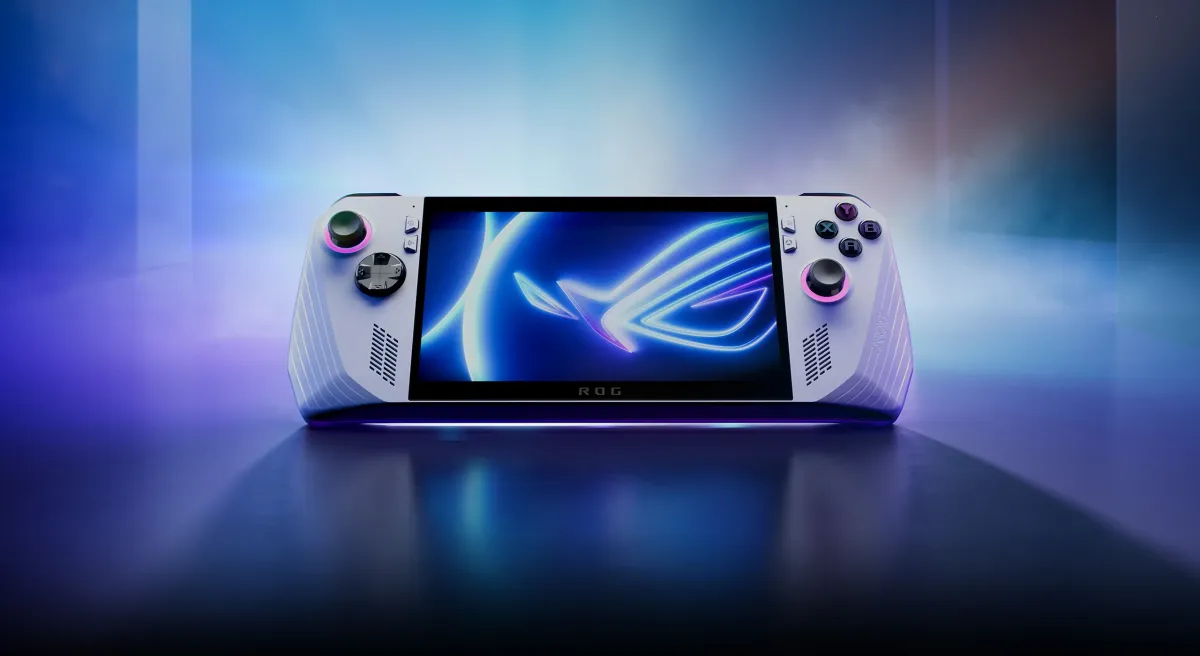Asus ROG Ally Review: A Windows Handheld Contender
Discover our in-depth review of the 2023 Asus ROG Ally. Explore performance, screen quality, battery life, controls, and how it stacks up against the Steam Deck and other Windows handhelds.

Table of Contents
Summary
The Asus ROG Ally has quickly become one of my preferred handhelds. It delivers a balanced combination of performance, design, punchy speakers, and an excellent screen. My initial experience was smooth and enjoyable, as I immediately dived into disassembly and modding. This included popular mods like the 90Wh battery upgrade featured in the GamersNexus video, Hall sticks, and even collaborating with the HandHeldModz Discord to create the Ally X battery upgrade. Subsequent software updates have further polished the experience, making it a strong competitor to the Steam Deck and other Windows handhelds.
Price when reviewed: $699
The Good
- Stylish design and solid build
- Stable temperatures and quiet fans
- Outstanding screen quality
- Polished UI with recent updates
- Strong performance for a handheld
- Punchy stereo speakers
- Easy to mod and repair
The Bad
- Battery life may not satisfy everyone
- Higher price compared to top competitors
- Some buttons and D-Pad could be improved
- Early Units had a faulty PTC Fuse that disabled Micro SD card readers
Specs as Reviewed – Asus ROG Ally RC71L
- Screen: 7" 1920x1080 IPS, 120Hz, touch
- Processor: AMD Ryzen Z1 Extreme, 8C/16T, up to 5.1GHz
- GPU: 12 RDNA3 CUs, up to 2.7GHz
- Memory: 16 GB LPDDR5-6400
- Storage: 512 GB NVMe PCIe Gen4 (M.2 2230)
- Connectivity: Mediatek MT7922 Wi-Fi 6e & Bluetooth 5.2
- Ports: USB-C 3.2 Gen 2 (charging & DP 1.4), ROG XG Mobile interface, 3.5mm audio
- Battery: 40 Wh, 65W PD charger
- Size: 280 x 111 x 21 mm | Weight: 0.608 kg (1.47 lbs)
- Extras: DPad, ABXY, triggers & grip buttons, dual joysticks, rumble, stereo speakers, gyro & accelerometer
Design and First Impressions
The ROG Ally is a larger handheld, not as pocketable as the Nintendo Switch. However, its modern design makes the Steam Deck look plain. The white plastic casing is easy to clean and the angled grips fit comfortably in the hands. All buttons are within easy reach, and the 7" screen is perfectly centered. The top houses analog triggers, shoulder buttons, dual exhaust vents, power button/fingerprint sensor, and a microSD slot.
The rear has stylish venting with a metallic strip that reflects rainbow colors under light. The overall construction is solid and durable, while the light weight makes it comfortable for long sessions.
Controls, Buttons, and UI
The Ally has a rich button layout reminiscent of an Xbox controller. Joysticks are responsive and precise, though the D-Pad feels cheap and awkward. ABXY buttons are generally reliable, with minor wobble tolerances. Shoulder and grip buttons perform well, while utility buttons like Command Center and Armory Crate provide quick access to settings and game launches.
Recent updates have polished Armory Crate and Command Center, making the Windows interface very convenient for gaming and non-Steam titles.
Screen
The 7" 1920x1080 IPS screen is a highlight, offering wide viewing angles, minimal backlight bleed, and vibrant colors. It supports 120Hz refresh, though 60Hz is sufficient for most games. Color coverage testing showed:
- sRGB: 93.4%
- AdobeRGB: 65%
- DCI-P3: 66.8%
- Max brightness: 467 cd/m²
- Contrast: 1262:1
Overall, this is one of the best screens on a handheld, rivaling or surpassing competitors.
Hardware and Performance
The Ally runs an AMD Ryzen Z1 Extreme CPU with 8 cores and 16 threads, paired with an RDNA3 GPU and 16GB LPDDR5 RAM. Storage is upgradable via a 2230 NVMe slot. Gaming benchmarks show strong performance across power modes:
- Turbo 25W: Solid FPS across modern titles
- Performance 15W: Balanced temps, quieter fans
- Silent 10W: Extended battery life at reduced performance
Games like Doom Eternal, Jedi: Survivor, and Octopath Traveler 2 run smoothly at 1080p, with frame rates competitive with the Steam Deck.
Noise, Heat, Connectivity, and Audio
The dual-fan cooling system efficiently manages heat without being intrusive. CPU temps range from 53°C (Silent) to 75°C (Turbo). Note that the microSD slot near the exhaust can get hot under Turbo mode.
Wi-Fi 6e connectivity is stable, Bluetooth works flawlessly, and stereo speakers are loud and well-balanced. The device also includes a fingerprint sensor, microphone array, and ambient light sensor.
Battery Life
The 40 Wh stock battery is comparable to the Steam Deck. Battery life varies by mode and performance settings:
- Turbo 25W, no FPS limit: ~59 min
- Performance 15W, 60fps limit: ~97 min
- Silent 10W, 30fps limit: ~145 min
Fast charging is included with a 65W PD charger, fully recharging in under an hour. For users seeking longer playtime, multiple battery upgrade options are now available:
- JSAUX 65Wh battery – $79.99
- Ally X 80Wh battery – compatible with the Ally with some modifications. Follow our Ally X Battery Mod Guide for instructions.
- Other compatible upgrade packs from AliExpress and community-supported mods
These upgrades can significantly extend playtime while retaining safe temperatures and stable performance, making longer sessions more enjoyable.
Price and Availability
The Asus ROG Ally is available at Best Buy for $699 (sale $599 at review time). A lower-tier Z1 model exists for around $100 less, though the Z1 Extreme is the preferred choice for performance.
Final Thoughts
The Asus ROG Ally has become a standout handheld, blending performance, design, screen quality, and excellent audio. While the D-Pad and some buttons are minor drawbacks, software updates have polished the experience and made Windows-based gaming convenient. Compared to the Steam Deck, the Ally excels in screen, audio, and ergonomics, making it my preferred handheld overall.
Credits & References
- Official Asus ROG Ally page: https://rog.asus.com/gaming-handhelds/rog-ally/rog-ally-2023/
- Best Buy ROG Ally listing: https://www.bestbuy.com/product/rog-ally-7-120hz-fhd-1080p-gaming-handheld-amd-ryzen-z1-extreme-processor-512gb-windows/JJGGLR2YTG
- Article compiled by: HandHeldModz
- Images and hardware photos: Asus.com
